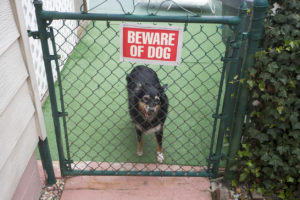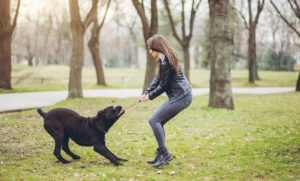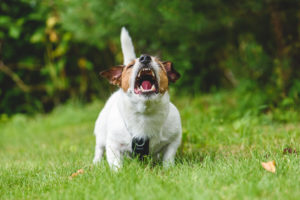Key Points:
- While any dog can bite, some are bred or trained to be more aggressive than others.
- Properly socializing dogs will make them less likely to attack.
- In Georgia, dog owners can be found liable for injuries if the dog has a history of biting.
Some Dog Breeds Are Known to Bite More Often Than Others
Usually, when dogs bite, it is because they have been frightened, threatened, or are guarding something they consider their territory, such as their food dish, yard, family members, or a favorite toy. However, some dogs have been specifically bred and trained over the centuries to be aggressive. Classic examples of such breeding to produce dangerous behavior are the bully breeds, including Pitbulls, German Shepherds, Dobermans, and Rottweilers who were used by the military and law enforcement.
Nevertheless, it doesn’t all come down to genetics. Dogs that are improperly socialized with people or trained to attack are largely responsible for such animals getting bad reputations.
Breeds that Can Be Vicious and Known to Bite
Studies by the Centers for Disease Control (CDC), the American Humane Society, and the American Veterinary Medical Association agree that the list below represented the 10 breeds responsible for the highest bite rate in the nation from 2005 to 2017:
- Pitbulls
- Rottweilers
- German Shepherds
- Mixed Breeds
- Doberman Pinschers
- Alaskan Malamutes or Siberian Huskies
- Chow Chows
- Great Danes
- St. Bernards
- Presa Canarios
However, many other organizations and government agencies collect data on dog bites. How they organize their data makes the results challenging to compare. Depending upon how you define your statistical search, you can also find lists that include the Bull Mastiff, the Cocker Spaniel and the Chihuahua among the top biting breeds. When you sift through the numbers, the bottom line seems clear. Any dog will bite, and the bigger and stronger the dog, the more damage is possible.
Since the mid-90s, the CDC has studied various dog breeds, their temperament, and situations that incite them to attack. According to their studies, dog bite statistics by breed reveal that Pitbulls were involved in most of the accidents and injuries. The Pitbull is arguably one of the most aggressive dogs there is, even though they rate highly as having a good temperament. They were responsible for close to 300 deaths during the study period.
Further, the study showed that approximately 4.5 million dog bites occur in the United States each year, and 800,000 of those bites result in the need for medical care. Since the U.S. population is approximately 331 million people as of 2020, it means dogs will bite 1 out of every 73 people.
How Dog Owners Can Help their Dogs Not to Bite

While all this data can seem alarming, it doesn’t mean these breeds can’t make great family pets. If you fall in love with a Rottweiler or one of the Bully breeds, you simply must understand that in choosing such a pet, you also take on the responsibility for its behavior.
If you fail to train your dog properly and he bites someone, you will likely find yourself embroiled in a lawsuit and possibly found liable for all injuries and damages. In some cases, it could legally be a very expensive act of negligence.
According to the website PetKeen.com, many factors influence a dog’s behavior, which include:
- Training – Teaching the dog to socialize well with other people and strangers will help him to be less nervous.
- Sex of the dog –Unaltered males, in particular, are more likely to roam. Therefore, they have more opportunities to feel threatened by strangers.
- Owner behavior – Aggressive owners tend to teach aggression in their pets. Rough play can lead to aggressive behavior in other situations.
- Whether the dog is neutered – Altered dogs tend to bite less often.
- Whether the dog lives in a rural or urban area – Dogs who are often chained are much more likely to bite. Additionally, city dogs are more likely to encounter strangers, which is a key factor in many attacks.
- Regular exercise – Energetic dogs need regular vigorous exercise. When they don’t have an opportunity to “let off steam,” they are more likely to experience agitation that could lead to aggression.
- Breed trends over time –The characteristics selected in breeding decisions can impact behavior.

 1201 West Peachtree Street #2339 Atlanta, GA 30309+1-770-212-3795$0-$100000
1201 West Peachtree Street #2339 Atlanta, GA 30309+1-770-212-3795$0-$100000Thank you for the pencils! It was a thoughtful contribution to our teachers.

Do You Risk a Lawsuit If You Adopt a Known Vicious Breed?
Many state and local governments across the nation have enacted restrictions or bans on certain dog breeds, including American Staffordshire Bull Terriers (“Pitbulls”), Rottweilers, Chow Chows, German Shepherds, and Doberman Pinschers. That list is still growing despite strong opposition from dog owners and canine organizations.
Keeping a restricted breed in such an area is most likely a violation of the law. And that represents a double risk if the animal attacks a human or other animal. Even if your community doesn’t have bans or restrictions, you might still face legal action if your animal harms someone else.
In Georgia, the state works with the CDC and the Department of Public Health to collect and evaluate dog bite statistics. Here, the law is quite specific about what constitutes a “dangerous dog” or “public nuisance.” The statutes dictate how such an animal must be housed and handled. Be aware before adopting, that if a dog is reported to have bitten or attacked previously, he could represent a legal risk even to a new owner. Before you adopt, be sure to learn about the animal’s history.













